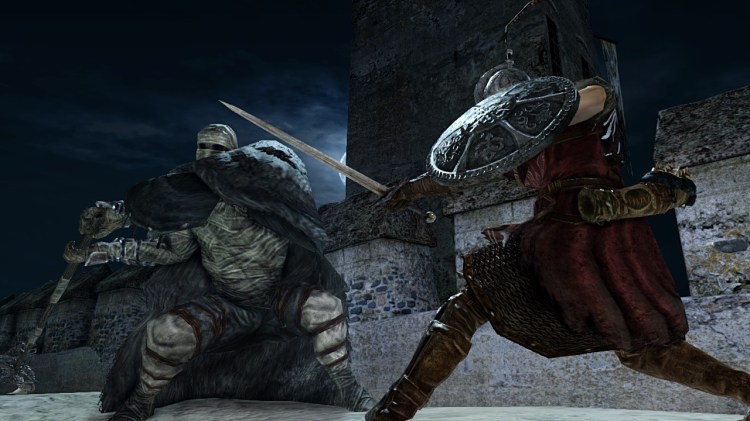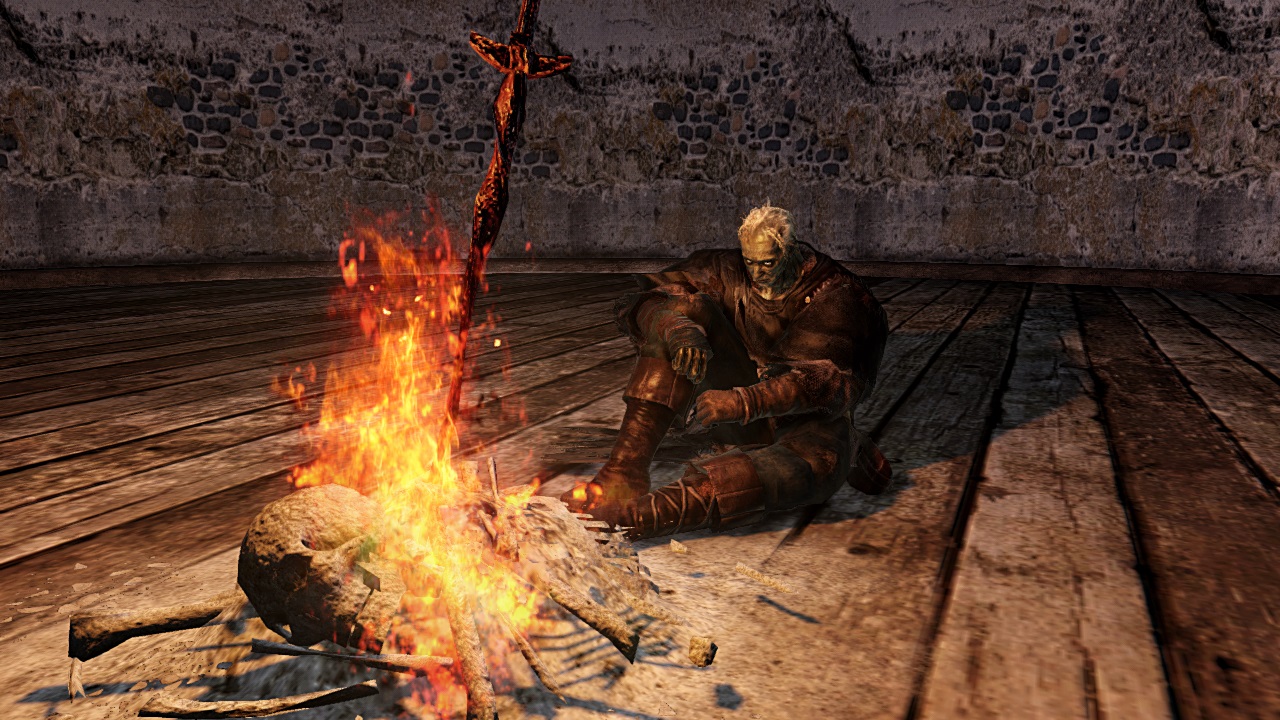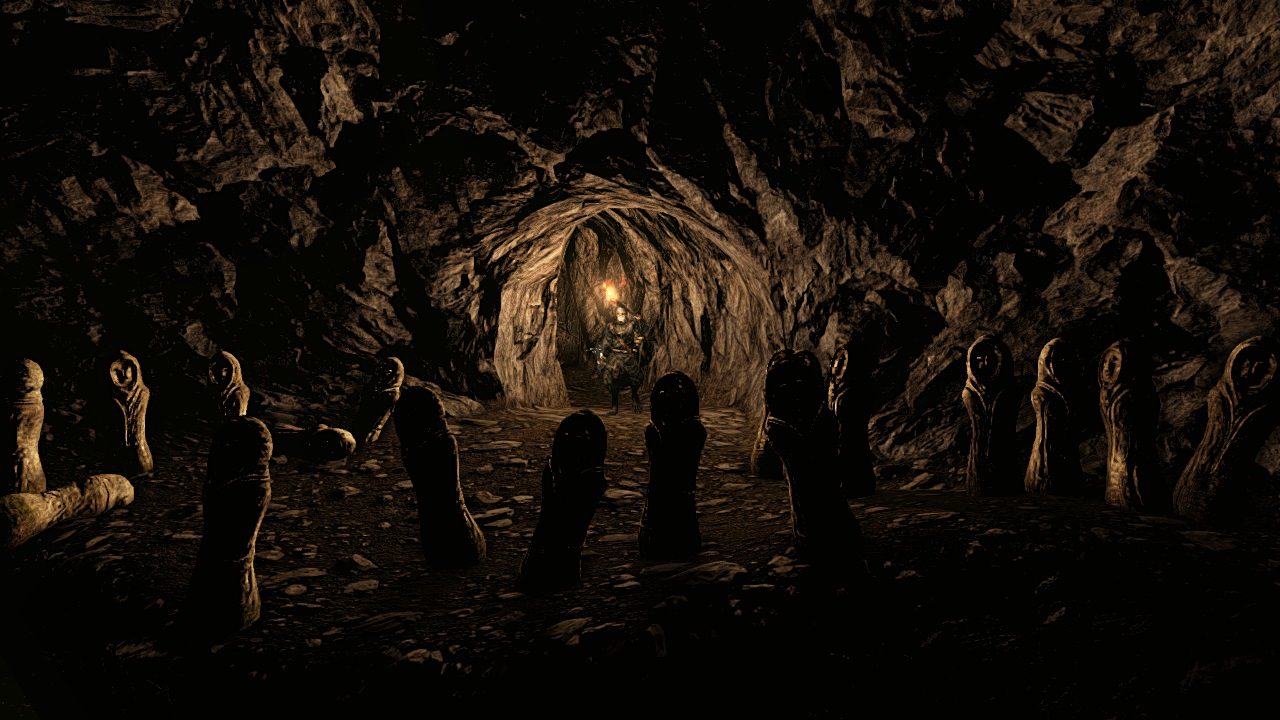Check out our Reviews Vault for past game reviews, and check out a mother’s review of Dark Souls II here.
“YOU DIED.”
Chances are, even if you’re familiar with the series, Dark Souls II (available now for PlayStation 3 and Xbox 360, the version in which I review here) will give you this terse message many, many times. And if you’re one of the people who enjoys the challenge and the intrinsic rewards of figuring out a particular area or boss and surviving to see the next, you’ll not only be OK with this, but you’ll cheerfully keep playing and beg for more.
Dark Souls II is bigger and badder than the original, while also managing to be less tedious and, overall, more fun. Publisher Bandai Namco and developer From Software have delivered a sequel that manages to improve upon the original in almost every single way.
What you’ll like
It’s every bit as punishing but a lot less annoying
The core of Dark Souls II remains intact from its predecessor. Every encounter has the potential to be deadly. Well-crafted areas reward diligent explorers with many hidden areas and treasures to uncover. Challenging boss battles test your patience but ultimately reward your persistence. Defeated creatures grant souls that you can use to either increase the stats of your character or purchase items from vendors. Death results in the loss of all accumulated souls unless you can make it back to the same spot you died previously without dying again. From Software has, however, trimmed some fat from the original by removing some confusing elements of the original and adding some conveniences that cut down on the tedium.
The numerical humanity system is gone now. Your character basically has two forms: human and hollow. Repeated deaths increase the degree to which your character appears to be a rotting corpse and impose a penalty to your maximum health (more on this below). Items called “human effigies” restore you to human form at any time, regardless of how many times you died previously.
You can now fast-travel between any two bonfires in the game (for the uninitiated, these fires serve as places of refuge and rest) immediately upon reaching the second fire. In the original Dark Souls, this was an ability you gained toward the latter half of the game. This addition makes the beginning much more manageable and removes a lot of unnecessary back-tracking through hostile environments. Killing 50 enemies just to get back to a particular item vendor was never any fun.
Consumable lifegems that slowly restore a portion of your health now bolster your Estus flask (a multicharge healing potion that returns from the original). Thankfully, these are plentiful, and nearly any enemy you dispatch has the chance to drop one. As an added bonus, they also don’t freeze you in place for a long period of time like the Estus flask does, which makes restoring health in the heat of combat a bit less risky.
Enemies now stop respawning in a certain area after you clear out them between 10 and 15 times. While I’ve heard many self-described “hardcore” Dark Souls players decry this as making the game too easy, let’s be honest: After failing a particular boss four or five times, most of us just tried to find clever ways to run past the enemies blocking our path anyway. Furthermore, those of us that don’t have much trouble with most of the bosses won’t go through a particular area more than once or twice. I really enjoy the option of forging a permanently clear path if I choose to do so or ignoring it if I’m feeling bold. This change also removes the option of “farming” (repeatedly clearing an area that rewards a large amount of souls) endlessly and eventually forces the player to move on to another area. In my mind, this is a good thing.
One other addition may prove especially beneficial to some: the Soul Vessel. This rare item refunds all of the souls you spend toward improving your character so that you can reallocate these points. This prevents you from encountering the unenviable position of being 20 or 30 hours into the game and being completely unable to progress due to the way you built your character. Alternatively, it gives you a way to try out a different playstyle (like magic vs. melee) without having to start a new game.
More of everything (well, except starting classes)
Once you select one of eight starting classes (down from 10 in the first Dark Souls), you’ll embark on a journey that expands on the original in almost every conceivable way. You’ll encounter more and a wider variety of enemies replete with even deadlier skill sets. Expertly crafted levels hide treasures from even the most dedicated explorers and force you to investigate a plethora of hidden passages, alternate routes, and helpful shortcuts.
Your journey will take you through a wide variety of environments including forests, castles, pirate coves, prisons, and an area full of windmills that would give Don Quixote an apoplectic fit. All of these varied zones not only feel larger and more complex than most of the places in the first Dark Souls, but they also do a better job of fitting in to and helping uncover parts of the story.
The plethora of different enemies will provide constant challenges and possibilities for emergent gameplay. If you pay attention, Dark Souls II will often provide you hints toward dispatching certain foes. For example, in one of the earlier zones, you meet these creepy foes that look like giant monkeys with extra-long spider-like arms and legs. The first time you encounter one of these monstrosities, it will charge toward your character. If you stand your ground, you’ll find that the beast shies away from the torch you’re standing next to, which gives you a valuable clue to surviving this area.
Armor and weapons abound in Dark Souls II and support just about every playstyle you could desire. Agile characters might prefer to stick with light armor for mobility and fast, thrusting weapons to expertly chip away at their enemies. Knights may be the walking equivalent of a tank, clad in heavy armor and wielding weapons heavy enough to cleave their largest foe. Even among the same weapon types, you will find that rare item that gives you a different style of attack. This makes it always worth checking out that new halberd you picked up, even if the statistics make it slightly less appealing than what you already have. A fancy new spin attack might be worth losing a few points of damage for.



